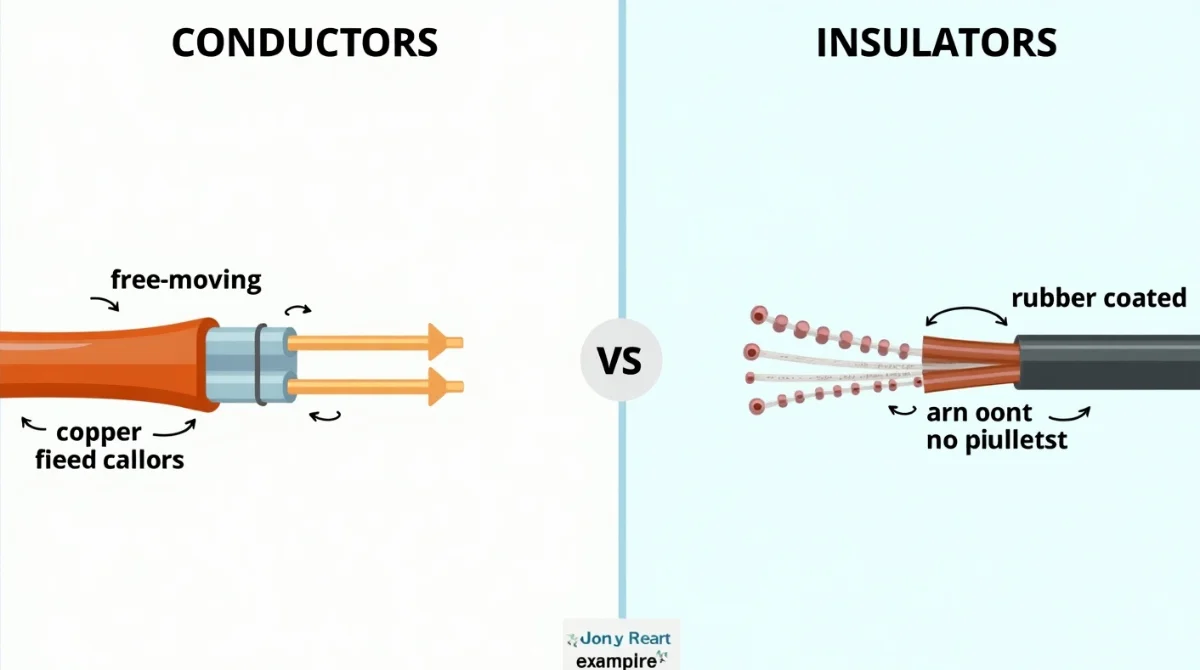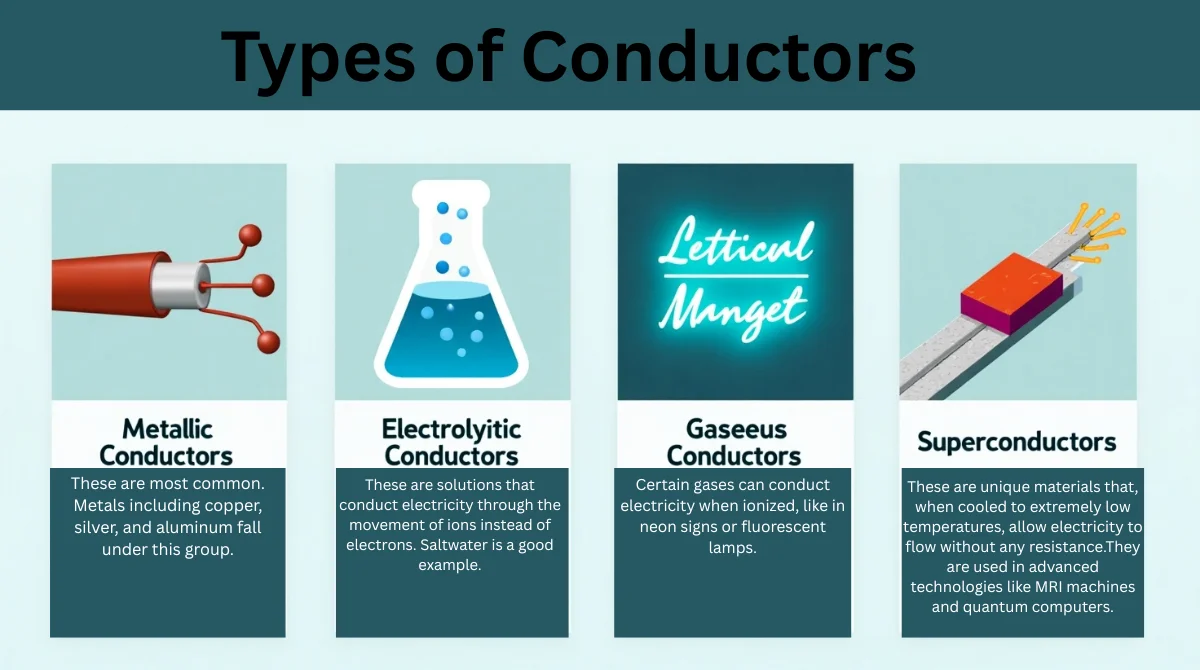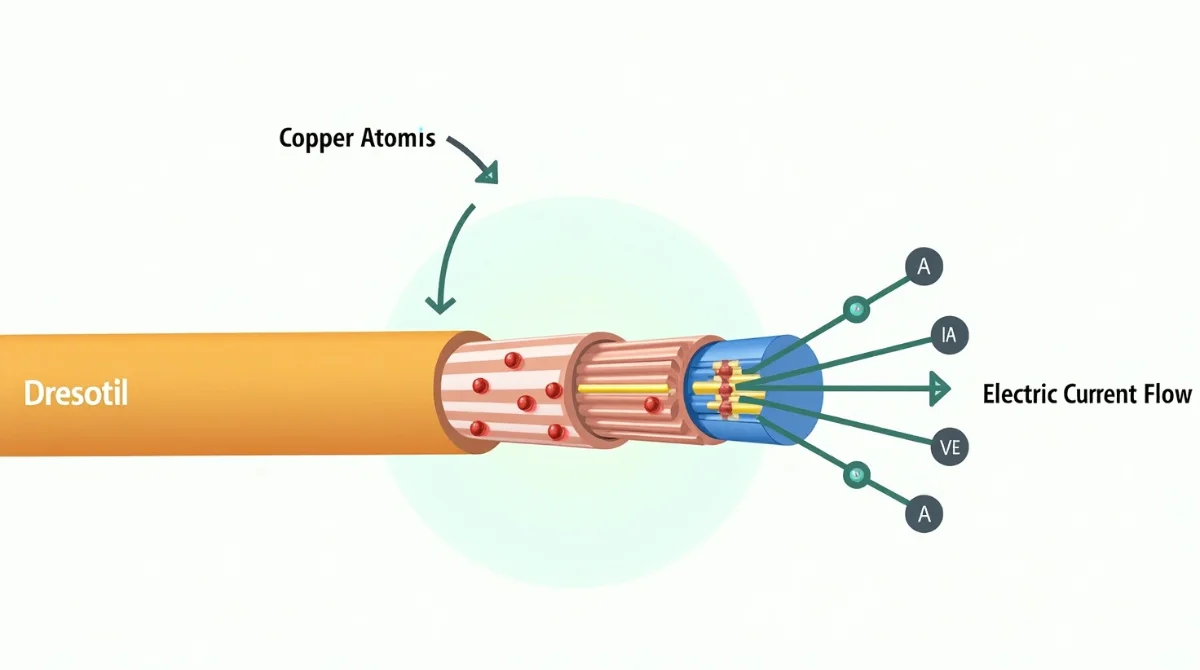Electricity is a part of our everyday lives. From turning on lights to charging our phones, we rely on it constantly. Have you ever stopped to think about how electricity makes its way from one location to another?This is where conductors come into play. In this article, we’ll explore what conductors are, how they work, and why they’re essential in our daily lives.
Understanding Conductors
A conductor is a type of material that readily permits the flow of electric current due to the presence of freely moving electrons within its structure.When an electric voltage is applied, these electrons move, creating an electric current. Metals like copper and aluminum are excellent conductors because their atomic structure allows electrons to move freely.
How Conductors Work?
Within a conductor, electrons are loosely associated with atoms, allowing them to move freely throughout the material.This means they can move freely when an electric field is applied. Think of it like a crowd of people in a hallway; if the hallway is wide and open (like in a conductor), people (electrons) can move freely. If the hallway is narrow and blocked (like in an insulator), movement is restricted.
Examples of Conductors
Here are some common conductors:
- Copper: is extensively utilized in electrical wiring, primarily because of its superior electrical conductivity and remarkable flexibility.
- Aluminum: Lighter than copper and used in power lines.
- Silver: Has the highest conductivity but is expensive, so it’s used in specialized equipment.
- Gold: Resistant to corrosion and used in high-end electronics.
- Iron and Steel: Used in construction and appliances.
Even the human body can conduct electricity because it’s made up of water and salts, which allow electrons to move.
Conductors vs. Insulators

While conductors allow electricity to flow, insulators do the opposite Insulators are substances that inhibit the flow of electric current due to their internal structure. The electrons within these materials are tightly bound to their atoms, making them unable to move freely. Typical examples of insulating materials include rubber, glass, plastic, and wood.Insulators are crucial for safety, as they prevent unwanted flow of electricity.
Types of Conductors

Conductors are not just limited to metals. There are different types based on their material or use:
1. Metallic Conductors
These are most common. Metals including copper, silver, and aluminum fall under this group.
2. Electrolytic Conductors
These are solutions that conduct electricity through the movement of ions instead of electrons. Saltwater is a good example.
3. Gaseous Conductors
Certain gases can conduct electricity when ionized, like in neon signs or fluorescent lamps.
4. Superconductors
These are unique materials that, when cooled to extremely low temperatures, allow electricity to flow without any resistance.They are used in advanced technologies like MRI machines and quantum computers.
Properties of Good Conductors
Good conductors share certain properties:
- Low Resistance: They allow electricity to flow with minimal opposition.
- High Conductivity: They can carry a large amount of current.
- Durability: They can withstand physical stress and environmental factors.
- Flexibility: Without breaking, these materials may be sculpted and stretched.
- Thermal Conductivity: Many conductors also conduct heat well.
The Science Behind Conductivity
Conductivity depends on how easily electrons can move through a material. This depends on:
- Atomic Structure: Better conductors are materials with free outer electrons.
- Temperature: Higher temperatures increase resistance in metals but may improve conductivity in some electrolytes.
- Material Purity: Impurities can hinder the flow of electrons.
Real-World Applications of Conductors
Conductors are everywhere in our daily lives:
- Electrical Wiring: Homes and buildings use copper wires to distribute electricity safely.
- Electronics: Devices like smartphones and computers rely on conductors to function.
- Power Transmission: Substances that possess loosely bound outer electrons tend to exhibit superior electrical conductivity.
- Automobiles: Cars use conductors in their electrical systems for lighting, ignition, and more.
- Appliances: Household items like toasters and refrigerators use conductors to operate.
Conductors in Technology
Conductors are key to innovation in technology:
- Circuit Boards: Conductive tracks made of copper carry signals in electronics.
- Wearable Tech: Smart clothing and gadgets use flexible conductive fabrics.
- Charging Devices: Conductive coils are used in wireless chargers to transmit energy.
- Robotics and AI: Robots use conductive pathways for sensors and movement.
Environmental Impact of Conductors
Mining and processing metals for conductors can harm the environment. Copper and aluminum production requires a lot of energy and may lead to pollution. That’s why there’s a growing interest in recycling metals and developing eco-friendly alternatives, such as:
- Conductive Polymers: These are plastics that can conduct electricity.
- Carbon Nanotubes: Light and strong, they’re being tested in future technologies.
- Recycled Materials: Reusing metal from old electronics reduces waste and mining.
Conductors in Different Fields
Conductors are used in various industries:
- Medicine: Used in medical devices like ECG machines and surgical tools.
- Construction: Electrical wiring in homes, offices, and industrial buildings.
- Space Exploration: NASA uses gold and other conductors in satellites.
- Transportation: Conductors are essential to electric vehicles and high-speed trains.
Safety Considerations
While conductors are essential, they can be dangerous if not handled properly. Since they allow electricity to flow, touching a live conductor can result in electric shock. That’s why conductors are often covered with insulating materials like rubber or plastic to prevent accidental contact.
Important safety tips include:
- Never touch bare wires.
- Use insulated tools when working with electricity.
- Turn off power before repairing electrical devices.
- Hire certified electricians for home wiring.
Innovations in Conductive Materials
Science continues to discover and improve materials for better conductivity:
- Graphene: A single layer of carbon atoms that is extremely conductive and flexible.
- Liquid Metals: Materials like gallium can flow like a liquid but conduct electricity like metal.
- Bio-Conductors: Scientists are experimenting with proteins and organic materials that can carry electricity, which could be used in medicine and nanotechnology.
Conclusion
Conductors are the silent workers behind our modern lifestyle. From lighting our homes to running our smartphones, they play a key role in making our devices and systems work smoothly. Understanding what a conductor is, how it works, and where it’s used helps us appreciate the science and technology that powers our world. As we move toward smarter, more sustainable technology, conductors will remain essential evolving alongside our needs and innovations.



